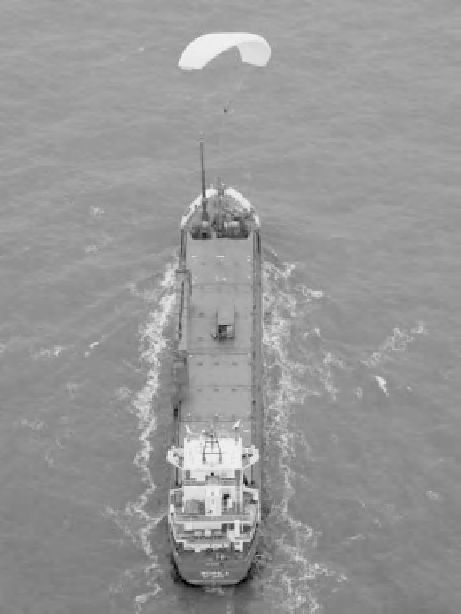Environmental Engineering Reference
In-Depth Information
Picture 13.2
SkySails, a wind propulsion system that reduces energy consumption of maritime vessels in
high seas.
Courtesy of SkySails.
twist,” 2005). So reduction in fuel consumption would not only reduce the environmental
impact of running fleets but would also produce an economic advantage.
Wind power may come back to help reducing fuel consumption in maritime vessels.
A particular technology that can cut fuel consumption up to 35 percent is the use of an auxil-
iary giant kite located at high altitudes and connected to the ship via a towing synthetic rope.
The kite has an area between 160 and 400 square meters and can pull tankers, cargo ships, or
fishing trawlers by taking advantage of powerful winds at high altitudes. At between 100 and
300 meters above the sea level, winds are 25 percent more powerful and more stable than close
to the sea level. So, by using a long cable, the kite can be deployed far up from the ship into
strong wind currents. Once the kite is deployed the power of the engine is reduced to save fuel.
The kite can be used not only with downstream winds but in courses up to 50 degrees to the
wind with minimal heeling (SkySails, 2009).
Planes
One of the main factors that produces the highest impact in fuel consumption of planes is the
age of the aircraft. According to data for passenger commercial jets, in terms of fuel consumed
per seat, a Boeing 777 was 70 percent more efficient than the Comet 4 in 1960 and 20 percent
more efficient than a DC10 or a Boeing 747 from the 1970s (Intergovernmental Panel on





